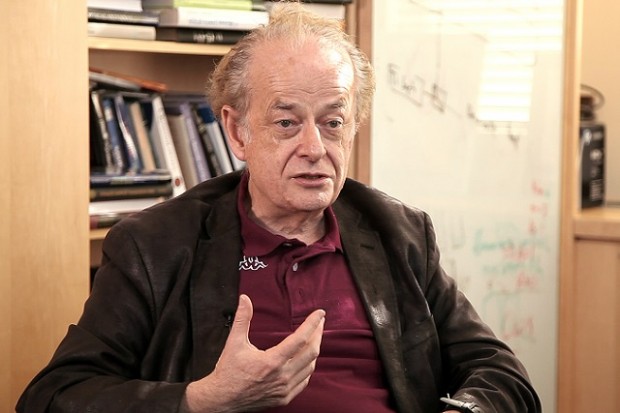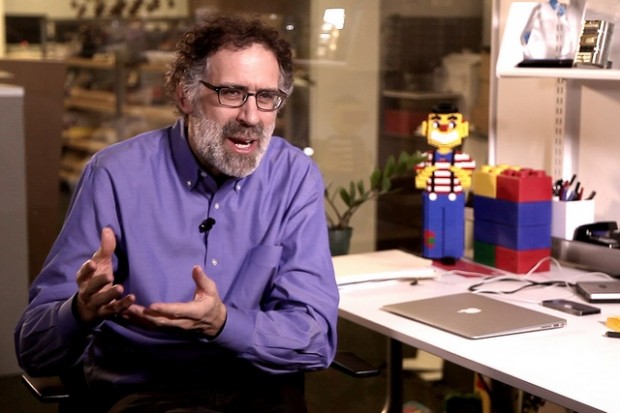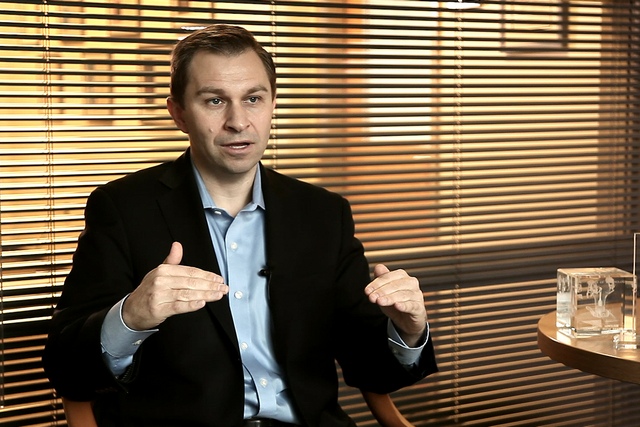Principles of Invention
Microbiologist Kim Lewis on the engineering approach to invention, the perfect solution, and abstracting the problem in biology
videos | July 8, 2015
What are the principles of inventing? What approach allows to solve problems which were thought to be unsolvable? How to apply engineering methods to biological studies? University Distinguished Professor of Northeastern University, Kim Lewis, describes the world view changing book he read when he was a kid.
One thing that I was not taught in graduate school was how to invent, I had to pick it up by osmosis. It is what most scientists do. But then, when I started teaching myself, I asked myself a question, “How do I teach my students to invent?” So, one principle is to reformulate the problem in abstract terms.
We in biology are experimental scientists, so we usually do not deal that much in abstractions, but let me give you an example. In 1950 Chargaff disassembled the DNA and wanted to understand that structure, and he came up with what was known then and now as the Chargaff rule. The amount of C or cytosines is equivalent to the amount of G nucleotides; the amount of A is equivalent to the amount of T. So this is C-G A-T Chargaff rule. So from that rule, then, it took the entire community three years, and Watson, and Crick, to actually see the crystal of DNA to come up with the double-stranded helix structure.

Why do kids solved the problem in ten minutes, the entire scientific community took three years and a Nobel Prize for Watson and Crick, right? It is because a problem was not formulated in abstract terms. So this is the power of abstraction. In my field, which is antimicrobial discovery in microbiology, I would like to give you another example to illustrate this point, and that is the history and the practice of drug resistance. So resistance to antibiotics is an enormous problem – pathogens resistant to antibiotics rise, and spread, and threaten our way of live. The study of resistance began very long ago with the discovery of beta-lactamases – enzymes that cleave penicillin. It was discovered shortly after penicillin was introduced in the 40’s into medical practice. And since then, once in several years, a discovery would be made about yet another mechanism of resistance.
So what I decided to do is reformulate that problem in abstract terms. In abstract terms here we have a cell, and inside the cell there’s a target, and here’s an antibiotic, and the antibiotic hits that target. And that’s all, that is the entirety of the problem. And then I present that problem to a class of people who know nothing about antibiotic resistance. And I ask them a very simple question, “ Ideally, from perspective of the cell, how could the cell, in principle, prevent antibiotic from hitting the target?” And it takes, again, approximately ten minutes for the class to realize that the antibiotic can be destroyed, it can be prevented from entering the cell, the target can be modified and on, and on, and on. And usually they came up with one or two mechanisms that we do not yet know.
So, question: why does it take the entire profession sixty years to come up with these mechanisms when someone in 1950 could have drawn this very simple model that I’ve just presented to you, come up with all possible mechanisms and discovered them in a couple of years? Again, this is an illustration of the power of abstracting the problem in biology.
Some other things that I would like to add to that, and maybe a very important one, that is that separates scientists from people who simply get good grades and then go on to do something else in life, which is also wonderful.
But if you want to be a scientist, then you should be able not only to solve problems, but to formulate problems.
This is the most important thing: how to formulate a winning project, how to recognize a problem that isn’t formulated. That is very important.
So, in where do you get that problem to formulate it? Well, one thing that I have been using, and that I encourage my students to use, is to look for paradoxes. Look for things that make absolutely no sense. You read a paper, and we, people, are annoyed when we don’t understand something. And we tend to sweep that under the rug, ignore it and move on to things that we do understand. But I encourage you to focus precisely on the things that you do not understand, because chances are that the profession doesn’t understand them either. And that indicates a gap in knowledge. If you can focus on a gap in knowledge, formulate it as a problem – then you have a winning project.
When I was a kid, I read a thin little book, written by an engineer, a Russian engineer Altshuler, who tried to formalize invention in engineering. And I found it fascinating. Altshuler has a minor following in a number of places, for example, in Israel there is a following for Altshuler, in Japan, here and there are seminars, etc. And periodically I get an email from someone, I publish a paper, and I get an email: “are you familiar with Altshuler and his trees’ approach, because your paper looks very much like you were reading his work?” And I answer, “Yes, indeed, when I was a kid, I read Altshuler.”
Altshuler came up with a number of principles, and probably the most powerful of these principles is the principle of a “perfect solution”. His book starts with an illustration of that principle. The basic idea is not to worry about how you are going to implement an invention. Formulate what you want, not how you are going to get there, and then worry about how you are going to get there.

Here is Altshuler’s perfect solution. The only thing that you would like to see is the leak, right? And it sounds wonderfully absurd. The plant disappears. The only thing that you see is the leak. But once you’ve formulated that – and it’s terrific that it sounds absurd, because that means that you’re onto something – then you can come up with a technical solution. You can then say, “OK, what is that you can see when you do not see anything else? Well, that’s something that fluoresces. So how about putting a fluorescence dye into the tubing, turning off the light, turning on the UV light, and then the only thing that you will see in that plant is the leak in the tubing”. And it is exactly how these days leaks are determined in refrigerator plants.
I thought that was fascinating. And so many years later, I was thinking about a very different problem, a problem of latent cells of tuberculosis. Tuberculosis, obviously, is a dangerous disease, but very often it goes into a latent form: there are no symptoms, but if a person gets immunocompromised, by, for example, contracting HIV, then tuberculosis comes back. So it was hiding somewhere in a latent form. We know absolutely nothing about these cells, we don’t know how many of them there are, where they are hiding, or how to study them. And so I was thinking that ideally we could, of course, model that in a mouse (a mouse also has that latent infection), and we could use cells, labeled with a fluorescent protein, green fluorescent protein. And so now the cells that actively divide would lose that protein, and cells that went into latency do not divide and therefore do not dilute that protein, and they will always be fluorescent green if we turn on the UV light. That’s is exactly what we are doing, and that allows us for the first time to track latent cells.
That would have been extremely difficult to come up with this idea, if we did not think in terms of ideal solution – let the latent cells be the only thing that we see.
And then I also realized that we can invert Altshuler’s principle, because he, of course, was an engineer, and he worried about building bridges and such. And as a scientist I think primarily about how organisms and cells function, and then I can ask a question from the perspective of a cell: how would the cell ideally do this or that, right? And that is how, for example, one can envision each and every mechanism that the cell uses to protect itself from antibiotics.
So these are some of the principles that I teach in my classes, and of course, it would be great if this kind of approach spread, and I hope that one of the things that’ll happen as a result of this recording is that it will spread, and this is one of the advantages, I think, of what is being done in this program.





























